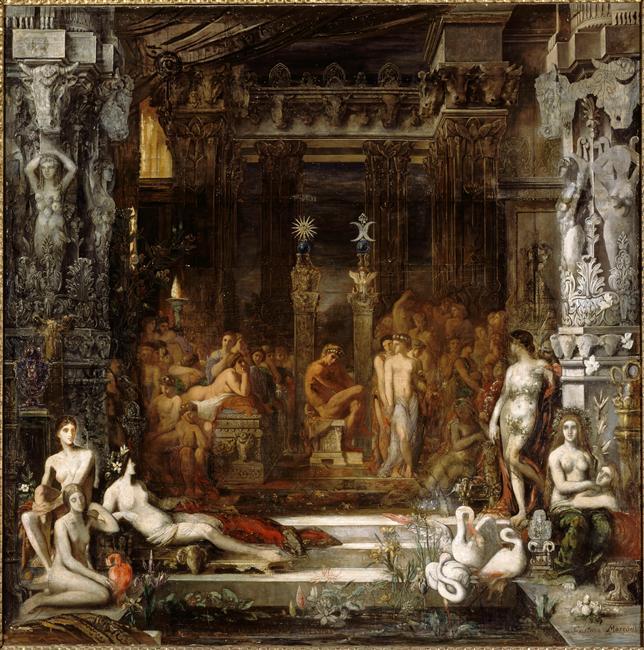Choix d'œuvres
The Daughters of Thespius [Les Filles de Thespius]
Gustave Moreau probably started this painting around 1853, and it must have been well under way by 1858 since his mother wrote to him on 22 January, while he was staying in Italy, “Your father was asking me yesterday evening if I thought that you would create something better than your Hercules surrounded by women. I think that you have made enormous progress, and I will not be very surprised if you do, as I have great hopes for my son, and I am convinced that he will satisfy them”.
The painting, enlarged in 1882, remained “a work in progress”. The central part reveals a strong influence of Théodore Chassériau and his painting the Tepidarium (Paris, Musée d’Orsay, RF 71) exhibited at the Salon in 1853 then at the Universal Exhibition in 1855. Here, Moreau presents a very personal view of a myth that was rarely depicted, as it was considered scandalous. Hercules, the son of Jupiter and the Theban princess Alcmene, had, at the age of 18, killed the lion of Cithaeron, which had been ravaging the flocks of Amphitryon, his supposed father, and those of King Thespius. The king, who wanted to ensure an heir and to show his gratitude to the hero who was staying with him, offered his 50 daughters to Hercules.
It is the moment before “this great act of generation” that the painter chooses to depict. Hercules is seated in the centre in a very meditative, very Michelangelesque pose, while behind him: “two cippi [...] support the sun and the moon, naturally symbolised by bulls and sphinxes: the two poles of human existence, of creation, the emblem of this constant duality of the two sexes.” Moreau successfully varies the facial features and poses of the king’s daughters. Some in this Cyclopean gynaecium are strolling around, others are dozing. As for the demigod, according to Moreau, he: “[…] feels within him the immense sadness of someone about to create, to give life, and yet at the same time feels assailed by that great elation of the soul that comes to he who is committed to sacrifice in every act of his fatal destiny. All the religious solemnity of primitive races is in him. A god brings him to life and sustains him.”

![The Daughters of Thespius [Les Filles de Thespius]](/sites/moreau/files/2020-11/Cat.25%20Les%20filles%20de%20Thespius.jpg)
